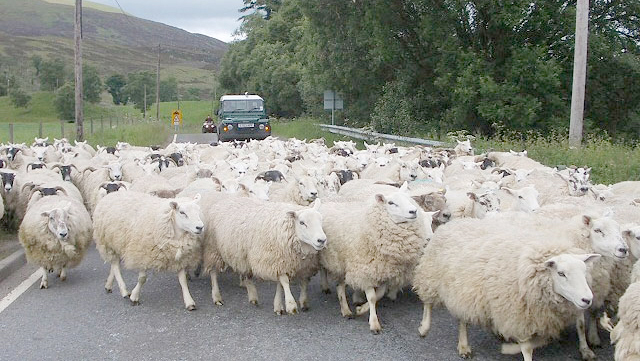
Over recent weeks the current pricing challenges that are being faced in the lamb market has been much published. While factors such as the Euro-Sterling exchange rates are largely outside farmers’ control.
It is important to focus on factors that can help improve lamb performance and margins from sheep enterprises. At this stage of the year worm control and grazing management are two major factors that affect lamb performance.
Worms are a major threat to the health and performance of young lambs and over the past two weeks warnings have been issued from both the Agri-Food and Biosciences Institute (AFBI) Veterinary Sciences Division and SCOPS (Sustainable Control of Parasites in Sheep) that there is currently a high risk period of Nematodirus worm infection.
Nematodirosis is a particular nasty disease that causes a high number of mortalities and stunts growth. Infection occurs when lambs ingest large numbers of infected worm larvae and the risk of this is particularly high when lambs are grazing the same pasture as previous years.
Nematodirus normally only affects lambs between 6 and 12 weeks of age and clinical signs usually appear two weeks after ingestion of large numbers of larvae so farmers should be on the lookout for lambs with watery yellow-green scour or ill thrift.
If farmers feel their lambs are at risk they should consult their vet or local CAFRE Beef and Sheep advisor about the various treatment options available.
SCOPS advise farmers to use a white (1-BZ) drench. These are highly effective against this parasite and are suitable for young lambs. It may be necessary to treat lambs more than once depending on the spread of ages in a group and subsequent weather conditions.
Faecal egg counts (FEC) are a useful way to establish if there is a worm burden throughout the season. However, it is important to note that low counts are not always reliable at this stage when checking for nematodirus infection as it is the immature larvae which cause the damage and these are not yet producing eggs. At this time of the year, observe lambs closely and treat those that are at risk of infection.
Grassland management is also a key factor in maximising lamb performance. Target growth rates for lambs on grass-based systems are 250-280 g/day up to weaning at 16 weeks.
This is achieved by growth rates of 300 g/day during April and May, reducing to 210 g/day in June and July. Regular weighing of lambs is the only way in which these targets can be monitored.
To achieve these growth rates short leafy dense pastures must be established and maintained, ideally between 4 and 6 cm.
Research work investigating sheep only grazing systems has shown that lamb growth rates can be reduced by 15% if sward heights are maintained above the target range of 4-6 cm. Farmers might expect lambs to perform better if there is "plenty" of grass, however long grass is less digestible and lamb performance will suffer. Foot problems also increase on pastures with high grass covers.
Setting up a rotational grazing system is a very effective way of maintaining grass quality and helping to match grass supply to the demand of the ewes and lambs.
A rotational grazing system can be set up simply by dividing the total grazing area into 3-4 blocks or fields and moving the ewes and lambs round the fields in line with target grass heights. In addition this can enhance grass growth and reduce exposure to worm burden.
